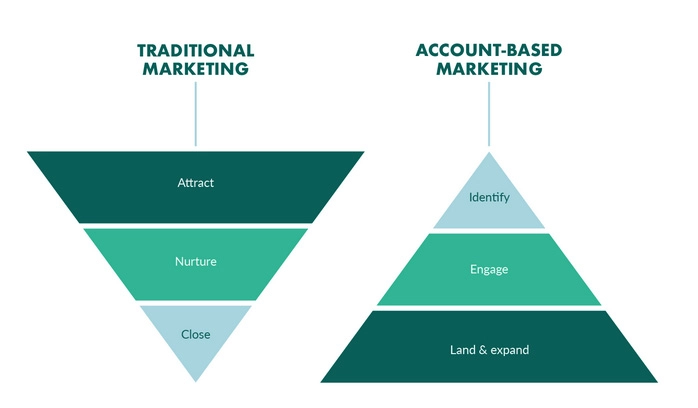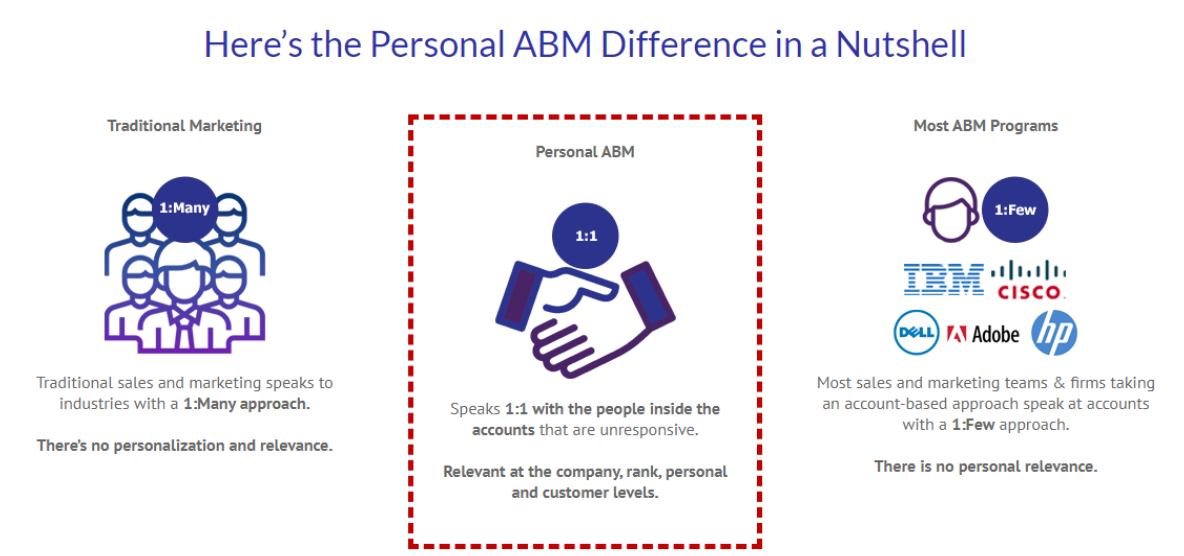
Measuring and Analyzing Lead Generation Metrics for Growth
January 18, 2024
Conversion Rate Optimization: Turning E-commerce Traffic into Leads
January 19, 2024Account-based marketing (ABM) plays a crucial role in driving account expansion for businesses. By targeting specific accounts and tailoring marketing strategies to their unique needs, ABM helps companies build stronger relationships, increase customer loyalty, and ultimately drive revenue growth. This personalized approach allows businesses to understand their customers on a deeper level, offering valuable insights that can be used to create targeted campaigns and relevant content.
By aligning sales and marketing efforts, ABM enables organizations to focus their resources on high-value accounts, maximizing the potential for cross-selling and upselling opportunities. With its professional and strategic approach, ABM has proven to be an effective tool for businesses looking to expand their accounts and achieve long-term success.
-
Personalized Approach:
- ABM allows marketers to tailor their messaging and campaigns specifically to the needs and preferences of individual accounts. This personalized approach helps in building stronger relationships with existing customers.
-
Deepening Customer Relationships:
- By understanding the unique challenges and goals of each account, ABM enables marketing and sales teams to create content and campaigns that resonate with the target audience. This helps in deepening relationships and increasing customer loyalty.
-
Cross-Sell and Upsell Opportunities:
- ABM identifies opportunities for cross-selling and upselling by analyzing the account’s current usage, needs, and potential for expansion. Marketing and sales teams can then create targeted campaigns to promote additional products or services that align with the customer’s evolving requirements.
-
Alignment of Sales and Marketing:
- ABM encourages close collaboration between sales and marketing teams. With a shared focus on specific target accounts, both teams work together to identify growth opportunities, create personalized content, and ensure a seamless customer experience throughout the expansion process.
-
Account-Centric Strategies:
- ABM shifts the focus from lead-centric to account-centric strategies. This means that marketing efforts are concentrated on the entire account, allowing for a more comprehensive understanding of the account’s needs and the potential for expansion.
-
Data-Driven Insights:
- ABM relies on data and analytics to understand customer behavior and preferences. By leveraging data insights, marketing teams can identify patterns, predict future needs, and proactively address account expansion opportunities.
-
ROI Measurement:
- ABM facilitates a more accurate measurement of return on investment (ROI) for marketing activities. By concentrating efforts on specific accounts, it becomes easier to attribute revenue growth and expansion directly to ABM initiatives.
-
Scalability:
- ABM can be scaled effectively to manage multiple accounts simultaneously. This scalability is essential for companies with a large customer base, allowing them to implement personalized strategies for each account segment.

Understanding ABM in a Nutshell
What Sets ABM Apart? Account-Based Marketing flips the script on conventional marketing by concentrating efforts on individual accounts rather than broad markets. This strategic approach involves tailoring campaigns to suit the unique characteristics and needs of targeted accounts. Typically prominent in the B2B realm, ABM enables companies to forge stronger connections with high-value accounts, delivering a personalized experience that resonates.
Tactics in the ABM Arsenal
1. Targeted Advertising ABM leverages targeted advertising to create a focused impact. Ads are tailored to speak directly to the concerns and interests of specific accounts, maximizing engagement.
2. Personalized Content Crafting content that speaks directly to the needs and goals of target accounts is a cornerstone of ABM. Personalization enhances the relevance of the message, making it more impactful.
3. Account-Specific Events Events tailored to specific accounts create a unique space for interaction. Whether virtual or in-person, these events deepen engagement and foster relationships.
Benefits of ABM for Account Expansion
1. Increased Efficiency The precision of ABM makes it a more efficient marketing approach. By concentrating resources on specific accounts, companies can optimize their efforts and achieve a higher return on investment.
2. Greater Impact ABM’s personalized campaigns make a lasting impact on target accounts. Tailoring messages to address specific needs and goals enhances the effectiveness of marketing efforts.
3. Better Alignment with Sales Collaboration between marketing and sales teams is crucial in ABM. This alignment streamlines efforts, resulting in more effective account expansion endeavors.
4. Enhanced Customer Experience Personalization is the key to an improved customer experience. ABM allows companies to provide a tailored journey for their target accounts, strengthening relationships.
5. Higher Conversion Rates ABM’s focused approach often leads to higher conversion rates. By addressing the specific pain points of target accounts, ABM campaigns excel at turning leads into loyal customers.
Exploring the Contrast: ABM vs. Traditional Marketing Strategies
In the realm of marketing, the battle between precision and reach unfolds through two distinct strategies: Account-Based Marketing (ABM) and Traditional Marketing. Let’s delve into the key disparities that set these approaches apart and understand when to deploy each for optimal results.
Target Audience: Precision vs. Breadth
ABM: Focused Precision Account-Based Marketing hones in on specific accounts, aiming for a surgical strike rather than a broad impact. This targeted approach is particularly effective for companies eyeing high-value accounts in the B2B space.
Traditional Marketing: Broad Reach Traditional marketing strategies cast a wider net, focusing on reaching a larger audience. The goal is to generate leads from a diverse pool of potential customers, making it suitable for companies seeking broad market penetration.
Personalization: Tailoring the Message
ABM: Crafting Personalized Campaigns The heart of ABM lies in its ability to create personalized campaigns tailored to individual accounts. This customization ensures that the marketing message resonates deeply with the unique needs and goals of the target accounts.
Traditional Marketing: General Appeal Traditional marketing, while effective, tends to be less personalized. The message is crafted for a broader audience, aiming for a more general appeal rather than catering to the specific nuances of individual customers.
Collaboration: Breaking Down Silos
ABM: Marketing and Sales Integration ABM thrives on collaboration. It demands close coordination between the marketing and sales teams, breaking down silos to ensure a seamless approach in targeting and expanding specific accounts.
Traditional Marketing: Siloed Approaches Traditional marketing often operates in more isolated silos, with marketing and sales functioning independently. While both are crucial, the collaboration may not be as seamless as in an ABM framework.
Measurement: Tracking Impact
ABM: Targeted Impact Assessment One of the strengths of ABM lies in its ability to track the specific impact on targeted accounts. This level of granularity allows companies to measure success at the account level, offering valuable insights.
Traditional Marketing: General Difficulty Measuring the impact of traditional marketing at the account level can be challenging. Metrics often focus on broader trends and may not provide detailed insights into the success of individual accounts.
FQs About ABM vs. Traditional Marketing
-
Can a company use both ABM and traditional marketing simultaneously? Yes, a hybrid approach is possible, allowing companies to leverage the strengths of both strategies based on specific goals.
-
Is ABM exclusively for large enterprises, or can small businesses benefit as well? While ABM is often associated with larger enterprises, its principles can be scaled down for effective use by small businesses.
-
How can traditional marketing strategies be adapted for personalization? Leverage data analytics and customer segmentation to inject a degree of personalization into traditional marketing campaigns.
-
What industries benefit most from ABM? ABM is particularly effective in industries with a focus on long-term, high-value relationships, such as technology and finance.
-
Are there specific tools recommended for tracking ABM success? CRM (Customer Relationship Management) tools with robust analytics capabilities are ideal for tracking and measuring ABM success.
Conclusion
In the dynamic realm of marketing, embracing Account-Based Marketing opens doors to unparalleled precision and impact. The strategy’s focus on individual accounts, personalized campaigns, and strategic collaboration between marketing and sales teams sets it apart. As businesses strive for efficient account expansion, ABM emerges as a beacon of effectiveness.
In summary, account-based marketing is a strategic approach that enhances account expansion efforts by providing a personalized, data-driven, and collaborative framework for marketing and sales teams. It ensures that expansion initiatives are aligned with the specific needs and preferences of individual accounts, ultimately contributing to sustained growth and customer satisfaction.



